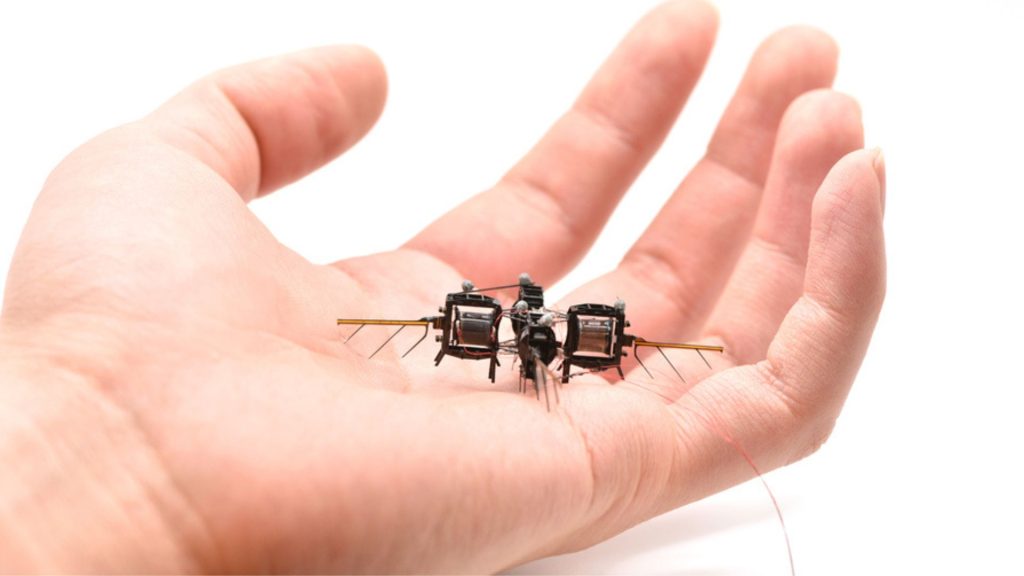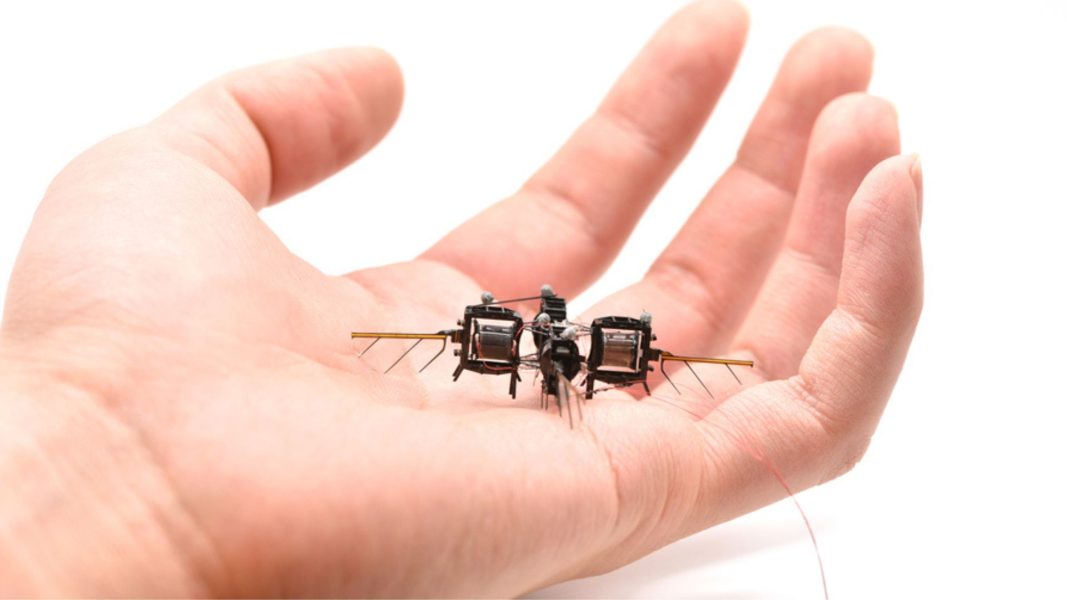MIT’s robot bees hover for 17 mins, break pollination tech record – Interesting Engineering

The robot reaches 35 cm/s, performs flips, and traces paths like “M-I-T,” highlighting control and endurance advances.a day agoa day agoa day agoa day agoa day ago2 days ago2 days ago2 days ago2 days ago3 days agoa minute ago7 minutes ago20 minutes ago2 hours ago2 hours ago3 hours ago4 hours ago5 hours ago14 hours ago15 hours agoJijo MalayilThe robotic insect can fly significantly faster than similar bots while completing acrobatic maneuvers like double aerial flips. MITMIT researchers are designing robotic insects capable of swarming from mechanical hives to handle precise pollination tasks efficiently.The team designed their tiny, flying robots to be significantly more agile and robust than previous iterations, drawing inspiration from the anatomy of natural pollinators like bees. More than 100 times longer than previously shown, the new bots can hover for over 1,000 seconds. Additionally, there is enough room in the new design for the robot to carry small sensors or batteries, which could allow it to fly independently outside of the lab.“The amount of flight we demonstrated in this paper is probably longer than the entire amount of flight our field has been able to accumulate with these robotic insects. With the improved lifespan and precision of this robot, we are getting closer to some very exciting applications, like assisted pollination,” says Kevin Chen, an associate professor in the Department of Electrical Engineering and Computer Science (EECS) and the senior author of research paper, in a statement.A more efficient artificial pollination method could enable future farmers to grow fruits and vegetables in multilevel warehouses, increasing yields while reducing agriculture’s environmental impact.But when it comes to endurance, speed, and agility, natural pollinators like bees are superior to even the best bug-sized robots. To address challenges in robotic insect design, researchers improved upon earlier models composed of four identical units with two wings each. The new design splits the robot in half, giving each unit a single flapping wing pointed outward. The arrangement enhances wing stability, increases lift forces, and reduces interference between wings. By halving the number of wings, the design creates space for electronics. Additionally, more complex transmissions now link the wings to actuators, reducing mechanical strain and extending endurance. According to the team, these transmissions feature longer wing hinges, boosting durability and resolving limitations seen in previous versions, making the robots more efficient and versatile.“Compared to the old robot, we can now generate control torque three times larger than before, which is why we can do very sophisticated and very accurate path-finding flights,” said Chen in a statement. Despite these design advancements, robotic insects still fall short of matching the capabilities of their natural counterparts. A bee, with only two wings, achieves rapid and highly controlled movements. This precision is enabled by a complex and finely tuned set of muscles, a level of sophistication that continues to fascinate researchers but remains beyond the reach of current robotic designs.The robotic insect’s wings are powered by artificial muscles, tiny actuators made from elastomer layers, and carbon nanotube electrodes rolled into soft cylinders. These actuators compress and elongate rapidly, generating the mechanical force needed for wing flapping. Previous designs struggled with buckling at high frequencies, reducing power and efficiency. To address this, the new design incorporates transmissions that prevent buckling, reducing strain and enabling greater force application.Another improvement includes long wing hinges, approximately 2 cm long and 200 microns in diameter, which minimize torsional stress during motion. Fabricating these hinges required precise multistep laser-cutting to avoid alignment issues that could affect wing movement.With these enhancements, the robot achieves remarkable performance, hovering for over 1,000 seconds (nearly 17 minutes) without flight degradation. It reaches a top speed of 35 cm/s, performs rolls and flips, and even traces precise paths, including spelling “M-I-T,” showcasing significant advancements in control and endurance.The team aims to extend flight duration beyond 10,000 seconds and enhance the robots’ precision for tasks like landing on flowers. Long-term goals include equipping the robots with tiny batteries and sensors to enable autonomous flight and navigation outside the lab.“This new robot platform is a major result from our group and leads to many exciting directions. For example, incorporating sensors, batteries, and computing capabilities on this robot will be a central focus in the next three to five years,” said Chen, in a statement. The details of the research were published in the journal Science Robotics.Stay up-to-date on engineering, tech, space, and science news with The Blueprint.By clicking sign up, you confirm that you accept this site’s Terms of Use and Privacy PolicyJijo Malayil Jijo is an automotive and business journalist based in India. Armed with a BA in History (Honors) from St. Stephen’s College, Delhi University, and a PG diploma in Journalism from the Indian Institute of Mass Communication, Delhi, he has worked for news agencies, national newspapers, and automotive magazines. In his spare time, he likes to go off-roading, engage in political discourse, travel, and teach languages.a day agoa day agoa day agoa day agoPremiumIE PROFollow
Source: https://interestingengineering.com/innovation/mit-robot-bees-break-pollination-record




